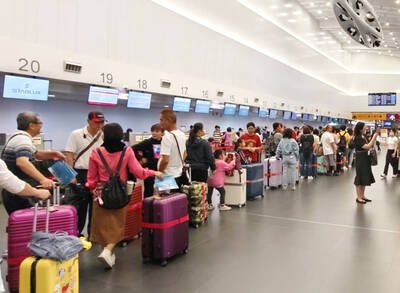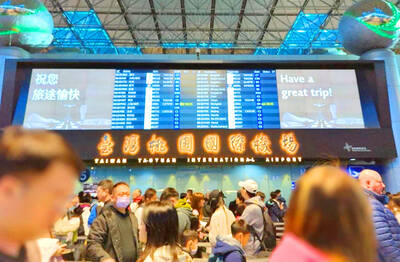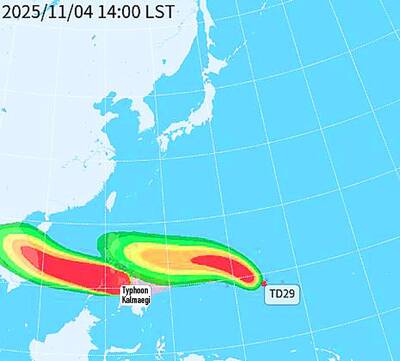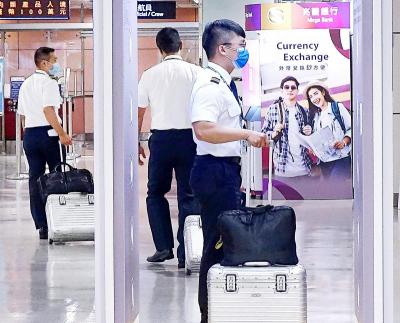Minister of Transportation and Communications (MOTC) Yeh Kuang-shih (葉匡時) yesterday laid out the government’s goals in resolving the Taiwan High Speed Rail Corp’s (THSRC) financial problems when he appeared before a meeting of the legislature’s Transportation Committee.
Yeh was scheduled to brief the committee members just on the ministry’s operation, but he said he wanted to discuss the THSRC’s woes as well because time was running out to find a solution.
“This is not the best time to address the financial problems, but it is the last window of opportunity. The Taiwan High Speed Rail Corp will definitely go bankrupt if the problems are not addressed by the end of the year. The only other solution would be a government takeover. If the company files for bankruptcy and the government is forced to take over operation of the system, the banks will probably collect on their loans, but neither large nor small investors will get anything back,” he said.
While THSRC’s major shareholders support the general idea of first reducing the firm’s capital and then raising it to reduce losses, they differ over the details of how to achieve this, he said.
The ministry also has yet to decide if the THSRC should be allowed to extend its concession period from 35 years to 75 years, he said.
Yeh said the government’s five principles in working out a solution to the crisis are: all decisions must be made in the public’s best interests; a majority of seats on THSRC’s board of directors should be assumed by representatives of government agencies or government-affiliated organizations to ensure the sustainability of the rail system; the government must protect the interests of about 60,000 small shareholders who invested in the system because of the government’s endorsement; THSRC should become a publicly listed firm after its financial restructuring is completed; and the system’s operations should be supervised by the legislature.
Ticket prices will certainly be reduced if a comprehensive solution involving the concession period and financial restructuring is found, the minister said.
Lawmakers peppered Yeh with questions about the restructuring plan after his presentation.
Chinese Nationalist Party (KMT) Legislator Lin Kuo-cheng (林國正) said that THSRC’s revenue rose by NT$1.6 billion (US$52.92 million) in the first half of the year, after it raised ticket prices, compared with the same period last year. If that growth rate continued, the company would earn NT$3.2 billion more this year than it did last year, he said.
THSRC has assets of NT$500.6 billion, but it has debts of NT$457.5 billion and accumulated operational losses of NT$52.1 billion, which basically means it is broke, Lin said.
“The company should not be tying ticket prices to its own financial problems, otherwise, it is trying to hold the public hostage using its own financial issues. I will boycott the financial restructuring proposal if the company refuses to lower ticket prices,” he said, adding that he thought prices should be reduced by 20 percent.
Democratic Progressive Party (DPP) Legislator Lee Kun-tse (李昆澤) threatened to boycott any extension of THSRC’s concession period, saying that the system’s railway switches had malfunctioned 67 times since operations began.
The ministry only sees the needs of the corporation, not the needs of the public, Lee said.
DPP Legislator Yeh Yi-jin (葉宜津) questioned the ministry’s ability to either negotiate a deal or keep a secret, saying that details of the proposed restructuring plan were disclosed to the media during the ministry-THSRC negotiations.
It would take about NT$30 billion for the government to buy the high-speed rail system, instead of the more than NT$300 billion the Bureau of High Speed Rail has claimed, she said.
“The ministry has no right to sacrifice the future generation of this country,” she said.

Three Taiwanese airlines have prohibited passengers from packing Bluetooth earbuds and their charger cases in checked luggage. EVA Air and Uni Air said that Bluetooth earbuds and charger cases are categorized as portable electronic devices, which should be switched off if they are placed in checked luggage based on international aviation safety regulations. They must not be in standby or sleep mode. However, as charging would continue when earbuds are placed in the charger cases, which would contravene international aviation regulations, their cases must be carried as hand luggage, they said. Tigerair Taiwan said that earbud charger cases are equipped

Foreign travelers entering Taiwan on a short layover via Taiwan Taoyuan International Airport are receiving NT$600 gift vouchers from yesterday, the Tourism Administration said, adding that it hopes the incentive would boost tourism consumption at the airport. The program, which allows travelers holding non-Taiwan passports who enter the country during a layover of up to 24 hours to claim a voucher, aims to promote attractions at the airport, the agency said in a statement on Friday. To participate, travelers must sign up on the campaign Web site, the agency said. They can then present their passport and boarding pass for their connecting international

WEATHER Typhoon forming: CWA A tropical depression is expected to form into a typhoon as early as today, the Central Weather Administration (CWA) said yesterday, adding that the storm’s path remains uncertain. Before the weekend, it would move toward the Philippines, the agency said. Some time around Monday next week, it might reach a turning point, either veering north toward waters east of Taiwan or continuing westward across the Philippines, the CWA said. Meanwhile, the eye of Typhoon Kalmaegi was 1,310km south-southeast of Oluanpi (鵝鑾鼻), Taiwan’s southernmost point, as of 2am yesterday, it said. The storm is forecast to move through central

The age requirement for commercial pilots and airline transport pilots is to be lowered by two years, to 18 and 21 years respectively, to expand the pool of pilots in accordance with international standards, the Ministry of Transportation and Communications announced today. The changes are part of amendments to articles 93, 119 and 121 of the Regulations Governing Licenses and Ratings for Airmen (航空人員檢定給證管理規則). The amendments take into account age requirements for aviation personnel certification in the Convention on International Civil Aviation and EU’s aviation safety regulations, as well as the practical needs of managing aviation personnel licensing, the ministry said. The ministry